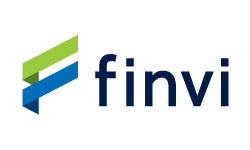Source: site
 philipp-katzenberger / unsplash
philipp-katzenberger / unsplashDebt recovery lives where privacy law, regulator expectations, and consumer trust meet. Consumers routinely disclose details they never planned to share, like banking changes after a job loss, executor status after a death, and identifiers to validate a claim. If that information is mishandled, the damage goes beyond a headline or a contract penalty. It undermines the dignity of the interaction and the consent that makes a compassionate resolution possible. That is why I treat cybersecurity as a compliance function measured by consumer outcomes: protect people first, then prove it with evidence that regulators and clients can trust.
Why Regulators Are Raising the Stakes
Theglobal average cost of a data breach reached $4.88 million in 2024, and rising costs are precisely why regulators now treat security lapses as consumer-protection failures, not IT glitches. Regulators now respond to breaches with the full weight of enforcement. In practice, the same rigor you apply to call recording, disclosures, and dispute handling must be visible in identity administration, encryption, logging, monitoring, and incident response. When personally identifiable information is exposed, the question is not “what broke in IT,” but “which governance control failed to prevent, detect, or contain the risk?”
For leaders, the stakes are concrete and permanent, including monetary penalties, contract clawbacks, litigation, and reputational drag that lingers long after systems are restored. The remedy is equally concrete. Set policy that shapes behavior and monitor controls in real time. Keep proof in plain view—signed access reviews, patch coverage reports, change records, and timestamped incident playbooks. Intentions don’t satisfy auditors; evidence does.
Embedding Security in Every Step of Debt Recovery
Security only works when it moves with the workflow, and that begins with identity. Use threat-mitigating and adaptive single sign-on so each person has one monitored account tied to their role. An account that can dynamically invoke phishing resistant multi-factor validation based on risk and a threat to its integrity. The Identity solution has to demonstrate the ability to identify anomalies in the customer login process, like accessing the system from impossible locations within impossible time frames and trigger additional validation. When administrative rights are required for a specific task, they are granted for that task and then expire automatically. Managers review access on a regular schedule so permissions always match current responsibilities.
Data is handled like currency, with a clear record at every handoff. Information is encrypted while it’s moving and while it’s stored, with keys managed under strict procedures. Protecting sensitive records must be achieved through a robust, defense-in-depth strategy. Access controls are stringently enforced at multiple points: network segmentation, the application layer, and within the database. Essential endpoint security tools must move beyond traditional reliance on malicious signature detection. They must integrate advanced capabilities, including User and Entity Behavior Analytics (UEBA), to actively detect deviations from normal or expected user or computer behavior, ensuring proactive threat identification and containment.
Companies should implement unified architectures where all security and technology controls report findings to a centralized intelligence platform. This system must be operated by security professionals trained to correlate complex data and produce high-fidelity, actionable attack cases for immediate remediation. The goal is to provide analysts with comprehensive context from the outset, enabling rapid investigation and dramatically reducing the duration of incident timelines, moving from a response measured in days to one measured in minutes.
Technology should lower risk by design. In collections, a unified, automated platform brings sensitive information under consistent controls and gives us a single, coherent view from first outreach through final resolution. In financial services, the average cost of a breach reached about $6.08 million in 2024, roughly 22% above the global average. Centralization, done well, narrows the attack surface and makes oversight provable.
Validate security before onboarding, write clear obligations into contracts, measure real performance with evidence, and track remediation to closure when gaps appear. The same expectation of proof applies internally: if a control matters, you should be able to see it working.
People remain the decisive layer. Role-specific training helps teams spot social engineering, handle data correctly, and stay within approved channels. Small habits like locking screens, keeping desks clear, and capturing notes securely close openings that adversaries count on. Over time, those patterns turn compliance from a checklist into muscle memory.
Building a Culture of Compliance‑Driven Security
Reactive posture will not outpace adversaries who iterate daily. Resilience comes from anticipating the next control and operationalizing it before an incident forces the issue. Assign clear executive ownership and make cybersecurity a company-wide responsibility. When issues surface, escalate fast, communicate clearly, and document lessons learned.
Run tabletop scenarios to practice containment, evidence preservation, and stakeholder communications under pressure. Tune detections for threats you actually face, including AI-assisted phishing and credential harvesting that target contact center workflows. Govern internal use of AI with data minimization, privacy, and access rules so innovation does not outpace protection. As engagement channels expand, anchor each touchpoint with authentication, consent management, and data-loss prevention that travel with the interaction.
Implement a relentless, systematic search for emerging threats and opportunities. Track regulatory advisories, client security updates, and industry breach reports. Convert findings into concrete actions: a hardened configuration, an updated playbook, a vendor requirement, and a training module. Measure impact and show progress over time. The through-line is simple: protecting consumers is the point; compliance is the promise; security is the proof. Align all three, and you reduce risk, sustain trust, and keep operations ready for what comes next.




